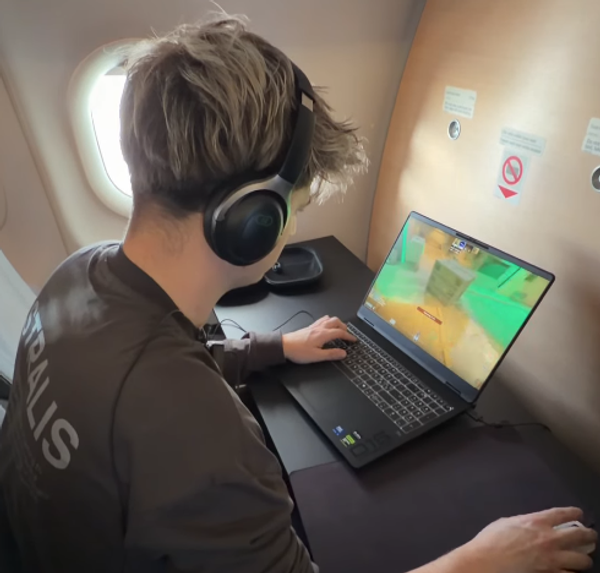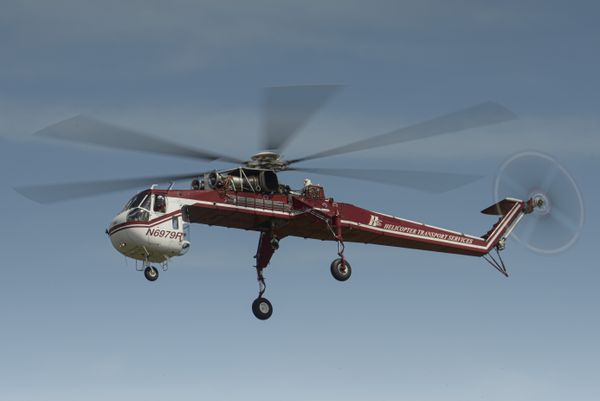Within only 70 hours more than 60 men of the US Army's 160th Special Operations Aviation Regiment accomplished an incredibly brave maneuver; stealing enemy equipment without ever tripping a single alarm.
Dubbed Operation Mount Hope III, this top-secret mission went off without a single hitch, despite facing sand storms and the looming threat of Libyan army forces. Without a single shot fired, US forces managed to steal one of the Soviet Union’s most prized possessions: a Mil Mi-25 Hind D attack helicopter.

Operation Mount Hope III took place directly after the Chadian-Libyan War (1978-1987). Tensions between both countries had begun to rise a decade before the advent of Libyan dictator Muammar Gaddafi.
As part of his rise to power, Gaddafi claimed a piece of land along the border of Chad and Libya known as the Aouzou Strip, a 44,000-square-mile piece of land consisting almost entirely of the Sahara Desert. With support from Eastern Bloc (communist and Soviet) countries, he trained and armed a Chadian group of insurgents known as the Front de Libération Nationale du Tchad, or the FROLINAT.
On August 27 1971, Chad accused Egypt and Libya of attempting to overthrow their president President François Tombalbaye. When this failed, Tombalbaye cut all diplomatic relations with Libya and Egypt, and invited Libyan opposition groups to relocate within the country.
In response, Gaddafi chose to officially recognize the FROLINAT group as the true government of Chad. Libya and Egypt resumed diplomatic relations in 1972, when Chad agreed to give the Aouzou Strip to Libya in exchange for £40 million. Chad and Libya signed a Treaty of Friendship in December 1972 to make the deal official.
By 1978, any peaceful relations between Chad and Libya had failed. Chad was turned into a war zone, with Chadian forces backed by France and FROLINAT forces backed by Libya. The French intervened in the conflict with no luck, and he war continued into the 1980s.
At the start of 1987, Libyan forces still bolstered impressive numbers: 8,000 troops and 300 tanks. However, they had lost the support of their Chadian allies, who’d previously provided assault infantry and reconnaissance forces. Without this aid, Libya was left to suffer in the desert.
Meanwhile, the Chadian National Armed Forces (FANT) had increased their military force to around 10,000 troops who were equipped for a desert war with fast and sand-proof Toyota pickup trucks armed with Missile d’Infanterie Léger Antichar (MILAN) anti-tank guided missiles. Due to these vehicles, the war gained the moniker "The Toyota War."
The Toyota War ended in September 1987, after the Chadians outnumbered the Libyans and regained control of the Aouzou Strip, only for Libya to retake it once more during a second battle.
The Libyan army had lost thousands of troops and $1.5 billion worth of tanks, weapons and equipment that were destroyed or abandoned during their retreat. Twenty aircraft were also left behind at the air base at Ouadi Doum, including an incredibly important Mil Mi-25 Hind D helicopter.
The Mil Mi-25 Hind D was one the most advanced Soviet helicopters of the time, and the US could not compare. Dubbed the “devil’s chariot” by forces in Afghanistan, it is both incredibly adaptable and near unbeatable, serving as an attack and transport chopper.
It has six suspension weapon units on its wingtips, is equipped with a four-barreled YakB-12.7 machine guns, and can accommodate up to 12 anti-tank missiles.
The Mil-25 Hind D is also heavily-armed, with a complex high-explosive fragmentation warhead capable of penetrating thick armor. The 18,000-pound helicopter is agile and adept at combat, as well as troop transport, making it the near unmatched. Obviously, Libyan forces would keep a close eye on these valuable weapons of war.
After negotiations between American, French and Chadian forces, the US military was granted permission to try and recover two Mil-25s, one of which was at Ouadi Doum. The mission was assigned to the US Army’s 160th Special Operations Aviation Regiment, otherwise known as the “Night Stalkers.”
Their task posed several unique challenges. Not only did they have to fly to the area in the middle of the night, they then had to load the massive helicopter via a sling system and fly off without losing it or alerting nearby Libyan guards.
In April 1988, U.S. troops began training with Boeing MH-47 Chinook helicopters around the deserts of New Mexico. One carried an external load of six 1,900-liter water containers to mimic the weight of the Mil-25 Hind D.
On June 10, over 60 army personnel boarded a Lockheed C-5 Galaxy with two MH-47s loaded in the cargo hold. Departing from Fort Campbell, Kentucky, the team flew to N’Djamena International Airport, in Chad, and disembarked the C-5 Galaxy, loading up both Chinook helicopters before departing for their 550-mile trip to Ouadi Doum at midnight.
Keeping the mission a secret was the only way it could succeed. Nearby Libyan forces could be alerted of the U.S. army's operation any time. There were also fears that the Mil-25 Hind D would be bombed as part of the Soviet Union’s plan to keep secrets about their “superior” weaponry.
At Ouadi Doum, a team was already on the ground preparing the helicopter for transport. Flying it was deemed too risky, as it had a bullet hole in one of its engines, so they removed the rotors from the chopper to transport it. The MH-47s then arrived on the scene.
Every possible pound of weight was shed off, including the additional fuel tanks, to ensure they could lift the Soviet chopper, which was loaded via sling underneath one of the American helicopters, before taking off toward safety with the second in tow. The additional fuel tanks and rotor blades were later flown out on a Lockheed C-130 Hercules.
Just as they were approaching N’Djamena International Airport, the team faced a dangerous situation. A sandstorm was approaching, lovering visibility to near zero. Both MH-47s Chinooks carrying their cargo were forced to fly slowly and within sight of one another to prevent a collision as they made their way through the desert storm.
Somehow, they safely landed with the Mil-25 Hind D in hand. Not a single bullet was shot, nor was there a single man abandoned. This is truly one of the greatest military heist missions of all time.
EVA Air to Launch Nonstop Flights to Washington-Dulles » Delta Orders 30 Boeing 787-10, Options for Additional 30 » Why Gogo is Refusing to Join the 'Starlink Speed Race' — And Why It's Winning Anyway »
Comments (0)
Add Your Comment
SHARE
TAGS
STORIES U.S. Army Boeing Helicopters Africa Heist Soviet Union Cold WarRECENTLY PUBLISHED
 Why Gogo is Refusing to Join the 'Starlink Speed Race' — And Why It's Winning Anyway
In a recent interview with AeroXplorer, Gogo's SVP Dave Falberg made it clear: Gogo isn't competing in a speed race against Starlink. Rather, it is competing in a race of reliability and integration.
NEWS
READ MORE »
Why Gogo is Refusing to Join the 'Starlink Speed Race' — And Why It's Winning Anyway
In a recent interview with AeroXplorer, Gogo's SVP Dave Falberg made it clear: Gogo isn't competing in a speed race against Starlink. Rather, it is competing in a race of reliability and integration.
NEWS
READ MORE »
 SAS Hosts Air-to-Ground CS:GO Match at 30,000 Feet via Starlink
On January 14, to prove the low-latency capabilities of the SpaceX-powered system, the airline hosted a live multiplayer Counter-Strike video game tournament at 30,000 feet.
NEWS
READ MORE »
SAS Hosts Air-to-Ground CS:GO Match at 30,000 Feet via Starlink
On January 14, to prove the low-latency capabilities of the SpaceX-powered system, the airline hosted a live multiplayer Counter-Strike video game tournament at 30,000 feet.
NEWS
READ MORE »
 Student Education as a Pathway to an Aviation Career
Explore how to become a pilot through aviation degree programs and flight school. Learn about requirements, costs, and career options.
INFORMATIONAL
READ MORE »
Student Education as a Pathway to an Aviation Career
Explore how to become a pilot through aviation degree programs and flight school. Learn about requirements, costs, and career options.
INFORMATIONAL
READ MORE »



